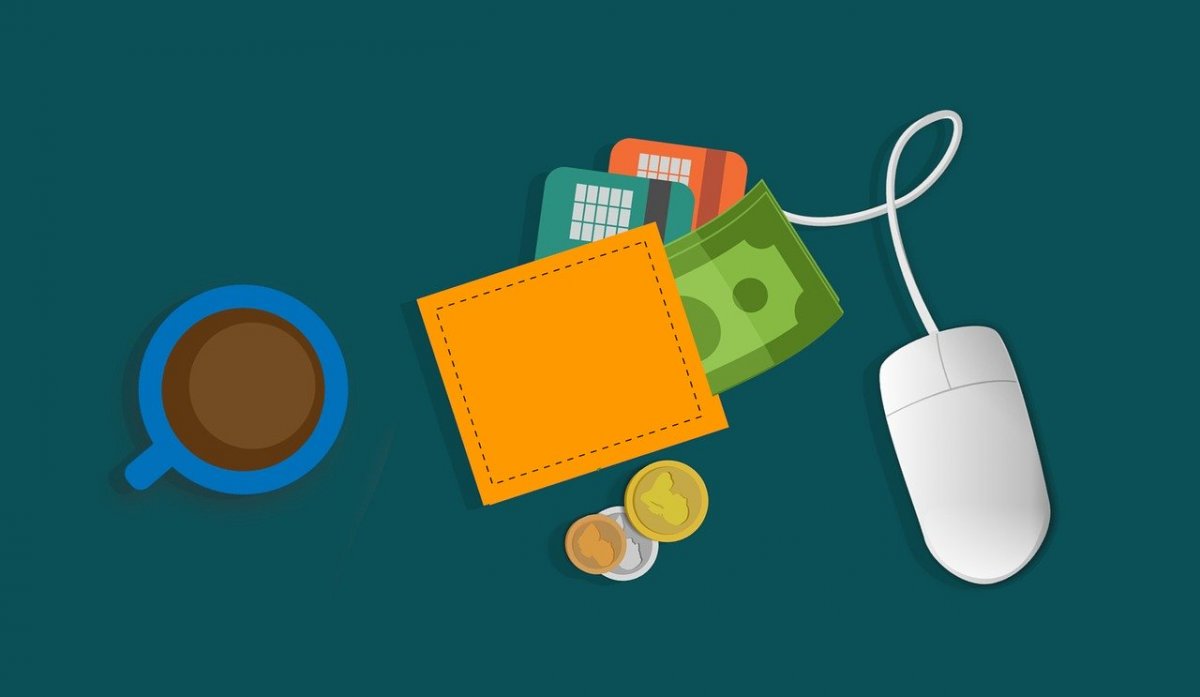
In the times marked by economic uncertainty, people are constantly on the quest for safe havens, which would keep their futures and bank accounts safe. They search for foolproof ways to survive in the face of global disasters and frankly speaking, there might be none. When fear rules the international market, even the price of gold itself begins to drop. For centuries, gold has been humanity’s safe haven for the darkest financial periods, and yet it is also affected by global crises. Where to turn to, when uncertainty is the only currency on the rise? Perhaps the answer is: wherever you trust is. In difficult times, people choose assets, currencies, and institutions they find dependable. Naturally, certain currencies evoke more trust than others, and Swiss Franc is easily one of the most respected. Switzerland’s long banking history, continuous stability, and care for business earned it a reputation of the financial safe haven, so its rising price seems like a natural turn of events. Swiss Franc’s display of power is a great opportunity to closely examine the potential of its digital currency — CryptoFranc (XCHF). Is it a digital future or fool’s gold?
First issued in November 2018, CryptoFranc is Swiss response to increasing demand for digital alternatives for traditional currencies. Switzerland is not the only country determined to dive into the digital era fully prepared: both China and Japan are currently working on their own digital currencies. China has been quietly preparing for the digital transition since 2014 and according to the governor of the People’s Bank of China, they plan to digitise Chinese monetary base, rather than create a new currency like Facebook’s Libra. In January 2020, it became clear that Japan would also work on their digital yen, motivated by China’s fast journey towards the cashless future. Switzerland is the heart of European banking, so it started to embrace new possibilities, just as they appeared. What do we know about CryptoFranc (XCHF)? The XCHF tokens are issued on the Ethereum Blockchain, and they’re fully backed by the physical banknotes: each Crypto Franc is equal to each Swiss Franc in 1:1 proportions. XCHF has a negative interest rate of 0% for 3 months following the bond issuance. There are redemption and subscription fees, but no transaction fee, apart from Ethereum Network’s GAS fee. The minimum necessary to receive an issuance from Swiss Crypto Tokens is 1000 Francs. What is the current financial capacity of XCHF? More than 10 million XCHF have been issued on the Ethereum Blockchain with the help of ERC-20 token smart contract, and there have been two redemptions with 5 million CHF volume in total. According to Armin Schmid, the CEO of Swiss Crypto Tokens AG, any customer segment and nationality is welcome, although the project is mostly aimed at Swiss investors. The good news is that any Swiss-based bond can be traded easily with anyone, and the ERC-20 tokens are no exception. In his interview with Demelza Hays, Armin admits that their company does not see Swiss National Bank Coin as competition, as their project’s nature and purpose would be completely different from Crypto franc’s. He explains that “if SNB would launch a CHF stablecoin on a private blockchain, it is not different from a centralized ledger. Only limited participants would be able to use it. E. g., banks.” and adds that “SIX Digital Exchange (SDX) have announced to work with SNB but only for settlement of SDX internal transactions.” In short, Crypto Franc’s future may be bright: with no competition from the government, interesting interest rates, and a relatively low threshold for investment, it may attract the attention of many investors.
Is Crypto Franc, however, secure enough to generate trust among its target group? The company claims so, stating that every month “the underlying assets of all tokens in circulation are audited by Grant Thornton Bank Audit Ltd”. Their smart contract was also reviewed and audited by Chain Security AG before it was deployed. The goal is total transparency: in the digital era, trust is the best currency to sell any currency. Open for all, transparent, and backed by Swiss Franc’s strength, Crypto Franc is slowly starting to gain importance in the financial world. Is it Switzerland’s ticket into the digital future? Only time will tell, but it has certainly captured the world’s attention on 28th March 2020 when it traded 0.6% higher against the dollar. Within 24 hours, $20,016.00 worth of Crypto Francs was traded on exchanges, such as Bitfinex, IDEX, Ethfinex, and CoinExchange. To closely examine Crypto Franc’s potential, we interviewed an expert in cryptocurrencies — Robert Schwertner. When we asked him about CryptoFranc’s strongest suit, he explained that its strength lies in its nature: “the cryptoFRANC is per definition a so-called stable coin, and the main difference between a normal cryptocurrency and a stable coin is that a stable coin is pegged to an asset, which reduces the volatility of that stable coin. The crypto Frank that underlying asset is supposed to be money, in other cases it could be real estate, it could be gold or another currency, like the euro or the US dollar.” He added that “Frank is backed by Swiss franc, which is a very stable currency due to its popularity and long tradition of the Swiss banking system.” Swiss Franc’s superpower is, therefore, that it is Swiss-made and asset-pegged. Robert went to add that Crypto Franc’s appeal is also connected to the team that runs it, stating that its “issuing corporation is part of the very active CryptoValley Zug blockchain ecosystem” and the company’s CEO, Armin Schmid is an expert with vast experience in the field as he “used to work for Six Payment Service, one of the largest payment solution provider worldwide.” When it comes to Crypto Franc’s potential to become a financial safe haven, Robert stated that nothing is to be said for sure as even “Bitcoin lost in value substantially — during peaks of a crisis, stable assets are cashed out to ensure liquidity. The same thing happened with gold, which usually increases its value during a crisis, but at the peak of a crisis people even sell gold, as they need cash for running their businesses.” He added that “with the Crypto Franc being backed by the Swiss Franc, we see it in a position in between. It will never be a full replacement for gold or Bitcoin as it is always linked to the current monetary system of Switzerland and it also goes parallel with all inflation and deflation of the Swiss Franc”. Robert explained that everything depends on the company’s strategy, which is yet to be clear. In terms of the coronavirus crisis, and its consequences, he remarked that it was “a great chance for digital currency. However, at the moment it is THE chance for payment solutions with smartphone like Apple Pay. And this is actually the biggest competitor for crypto token in general.” When asked about attractive cryptocurrencies to consider in turbulent times, he without hesitation responded: “Bitcoin. It could turn out to be indeed the new ‘digital gold’ as it is – probably - not manipulated by any investor, not controlled by any bank or government but only by its users.” What’s Robert’s take on CryptoFranc’s global potential at the moment? He’s sceptical about it: “CryptoFranc is definitely not a safe haven for investors at the moment, as the question is still to be answered: how stable is this currency when it gets rough, there’s no experience yet.” He also questions CryptoFranc’s security against cyberattacks, and for the most part, its potential for digital assets’ storage. In fact, he calls it “a big problem” wondering if “we can store digital assets long term. I mean over hundreds of years? Like gold? Can we?”. Another issue with Crypto Franc is its local nature and lack of popularity as a payment method. When we asked Robert whether the digital currency is likely to overcome both of these problems and gain global popularity, Robert simply remarked that “it does not make sense. Our experience from airports: Have you ever paid for your coffee with SwissFranc in Dubai, Shanghai or NY? One can do it but usually, it is a rip of. Terrible exchange rates. Why should it be different with a CryptoFranc?” Indeed, it seems that Crypto Franc may be an interesting solution, but on a Swiss, or perhaps European scale. All in all, Robert remains a hopeful realist, simply remarking that “there are solutions but a lot of innovation needs still to be done!”.
All things considered, CryptoFranc is definitely a currency to pay attention to, especially if you are based in Switzerland, but it seems unfit for the global scene. If it proves to be reliable, prepared for cyberattacks, and attractive for investors, it may become the future safe haven, but it still has a long way to go. Nevertheless, it brings Switzerland one step closer to the digital future and in digital games, every little makes a difference.
Sources:
https://nickersonnews.com/2020/03/28/cryptofranc-price-reaches-1-04-on-m...
https://cryptoresearch.report/crypto-research/tokenizing-the-swiss-franc...
https://www.swisscryptotokens.ch/2018/11/05/the-birth-of-a-new-swiss-mad...
https://www.bitcoinsuisse.com/stablecoins/





